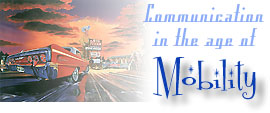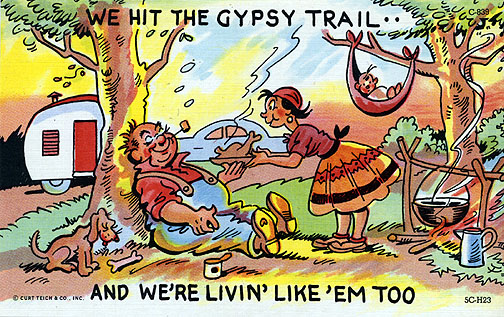
Office: HGH 210; phone: (408) 924-5378
Email: wooda@email.sjsu.edu
Web: http://www.sjsu.edu/faculty/wooda
 |
Dr. Andrew Wood Office: HGH 210; phone: (408) 924-5378 Email: wooda@email.sjsu.edu Web: http://www.sjsu.edu/faculty/wooda |
Introduction
: Course Calendar : Policies
: Readings
Assignments : Check Your Grades : Return
to Frontpage
In his chapter, "From fad to institution: Municipal autocamps, 1920-1924" (pp. 71-103), Warren Belasco writes: as auto-camping became more popular, it became more institutionalized. Municipal autocamps emerged in response to the problems of insensitive motorists who left the roadsides, schools, and farmland they briefly inhabited in shambles. City governments and boosters hoped that by attracting motorists to centralized downtown camps, they could keep their towns clean and make a buck or two.
Free municipal autocamps became imagined communities of democracy and sites of "Medieval caravansary: open friendly, informal, heterogeneous, intimate" (p. 92). In short, autocamps became seen as social melting pots even, at long last, for folks from different classes. Part of the power of this informality emerged from its anonymous nature. Camping relationships were generally composed of "brief contacts [and] sudden intimacies that dissolve forever at dawn" (p. 99). As we'll soon see, this autocamp democracy did not apply equally to woman as it did to men.

Meanwhile, auto-gypsies struggled between hard and soft primitivism - the former an ascetic Spartan existence that called for sacrifice and comradeship; the latter, a Garden of Eden, "the nostalgia of the overworked" (p. 83). Ironically, the soft primitivism chosen by most motorists was counterbalanced by the modern desire to make time, to speed through the landscape. Despite their "disgust for rail timetable shackles" (p. 87), many Americans became obsessed with speed during this period.
Again, Belasco points out a potential distinction among genders: while women supposedly preferred scenery to speed, men remained behind the wheel. Similarly, at camp, men were usually pictured around the campfire while women scarcely escaped domestic duties. Of course, one of the pleasures of reading traveling literature of this period is to discover women who challenged these stereotypical assumptions of their proper role on the road.